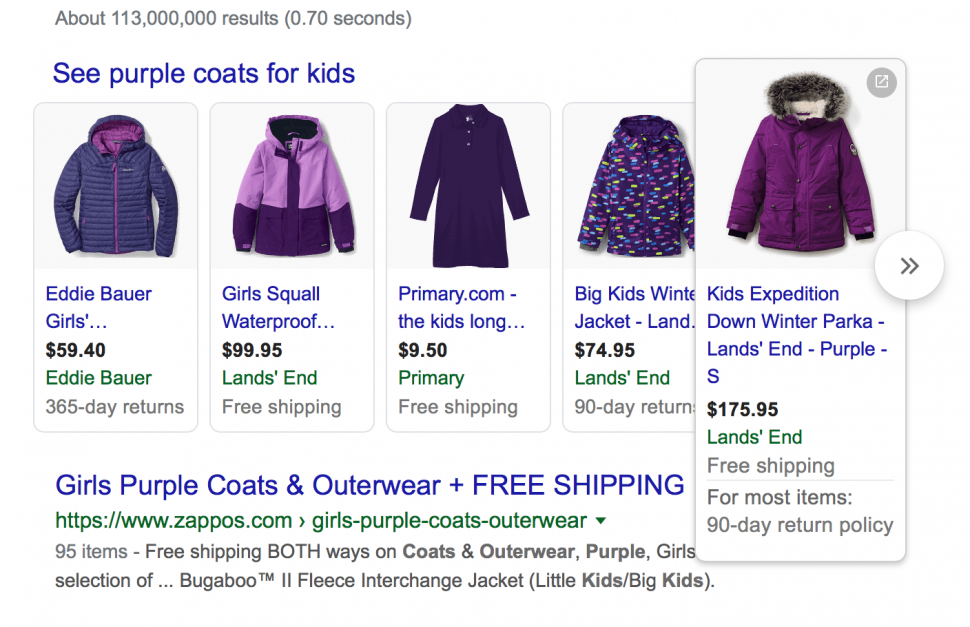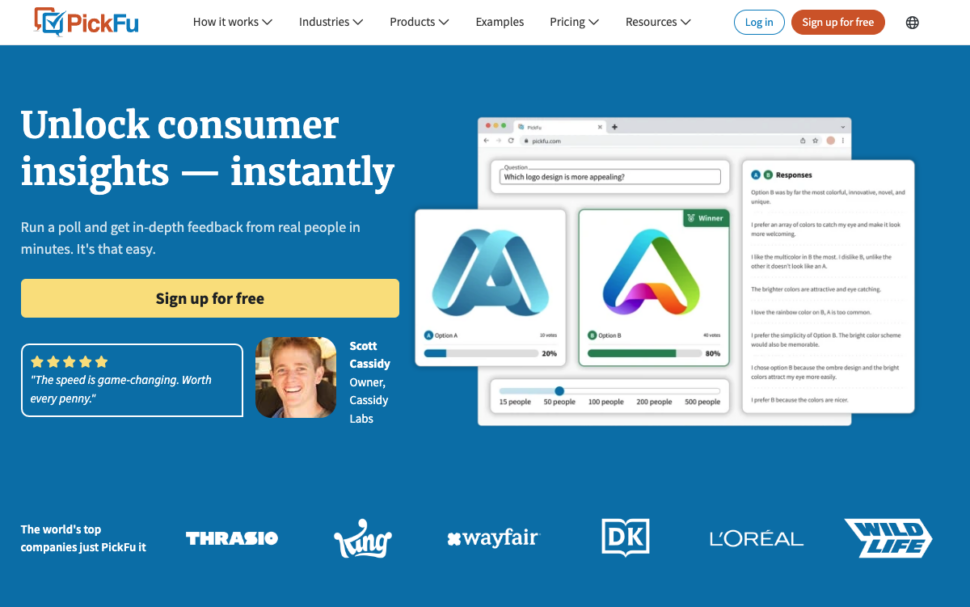Everyone who uses a smartphone knows that we’re flooded with app choices. App developers and marketers have to cut through an extremely crowded marketplace to sell their app successfully.
There are nearly 3.5 million apps on the Google Play store and 1.9 million on Apple’s app store and that number is only growing. In late 2023 there were more than 25,000 apps submitted to the App Store alone.
That’s why it’s important to develop and execute a high-quality app marketing strategy to get your app out into the world and have a chance of standing out.
In this article, we’ll cover what a great app marketing strategy looks like, specific channels and tactics to use, metrics to monitor, and tools to help you along the way.
What is an app marketing strategy?
Just as it sounds, an app marketing strategy is your plan of attack when it comes to marketing and selling your app.
In your strategy, you’ll consider the “four P’s” of marketing: product, price, place, and promotion.
This means understanding why your app is a good solution for customers, conducting market research to set a price, choosing a place to launch your app, and deciding on your promotional tactics.
Your mobile app marketing strategy should attempt to serve multiple phases of your customer journey. We can distill these into three phases:
- Awareness
- Acquisition
- Retention
While marketers often talk about a pipeline, the app user journey is rarely linear. Instead, users move through each of these phases in all directions, and your marketing strategy should look to serve each of these phases concurrently.
For example, there’s no point in having a sign-up campaign without a simultaneous brand or product awareness push. It’s also important to reconnect with dormant users through your marketing efforts to retain their business and keep them using your app.
That’s not to say that market strategy doesn’t involve different stages and timelines – just that the work never really stops in any one key area. So don’t ignore one piece in the user journey entirely to focus on another!
Key elements of a successful app marketing strategy
From beginning to end, there are specific components and activities that can make or break your app marketing plan. It starts from the bottom up with the following elements – getting the foundation right will inform the rest of your strategy.
Market research
If you’ve read this far, chances are you’ve already done your market research and come up with a concept for an app you believe will be successful. Still, there are many app providers who don’t pay enough attention to this vital step.
Proof of concept testing, market segment analysis, and even prototype testing are all methods of ensuring your app is effective and resonates with your target audience.
What is the purpose of your app? Who are your competitors? What are some of the key complaints about the apps that already exist in your chosen field? All these questions can be answered with market research. Then you’ll have clarity into the value your app provides so you can market the differences effectively.
Smart app developers understand that market research also ties neatly into the awareness, acquisition, and retention stages. It’s the foundation to all of your marketing.
For example, you can conduct PoC and prototype testing using a variety of market research tools. Survey platforms like PickFu let you discover the pain points and user needs that other apps in your segment don’t serve. You can then use the insights to inform your strategy and marketing.
If you use content marketing to engage potential users, the survey responses from your market research can even spark ideas for the content you create across the funnel.
Online presence
Every product needs a presence online, and apps are no different. For most, that means a website or webpage, which can also serve as a landing page for the various marketing efforts you’ll perform later in the process.
A webpage doesn’t need to be a complete and polished sales tool from the outset. You can start one as early as you like, and even use it to test ideas or to drum up awareness and interest in your app during its development. Some of the most successful apps started with nothing more than a free WordPress landing page and a small blurb about what they hoped to achieve.
Later, you can build it out more to include content, resources, testimonials, and more – but always make sure to include clear, visible CTAs for actually downloading your app.
Speaking of which, you’ll also need to submit your app to the App Store for iOS devices or the Google Play store for Android devices.These fundamental steps to setting up an app on smartphone stores are covered in our guide to launching an app.
App Store Optimization
With so much noise to cut through, it’s important to set your product up for success once it’s listed with Google, Apple, or both.
App Store Optimization, or ASO, is the process of improving your app’s visibility and conversions in the App Store or on Google Play. Focusing on ASO will help your app get listed higher in search results – and make sure you get the best possible results (clicks and downloads) once you are listed.
Just like in search engine optimization (SEO) it’s important to describe your app effectively and use the right tags and headlines to help users find you. Elements to consider include the following:
Category: Which category is your app in? Select the one that most closely matches your app’s purpose. For example, an accounting app should go under accounting. Look where your competitors are, and if there’s a category that suits your app but is currently underserved, perhaps choose that one instead of the more traditional category.
You might even benefit from a quick market survey to see how your target customers view your solution. You could ask an open-ended question such as, “What category do you consider this app to be in?”
Keywords: Like in SEO, keywords matter. But your keywords shouldn’t be set in stone from the beginning. Evaluate any relevant keywords your target market is searching for in the app store, and update yours to match.
App icons and image: It’s also important to select the best possible icons and screenshots to stand out from the crowd which can help with your mobile app marketing.
This is something you can easily test and optimize using online consumer insights platforms and survey tools.
For example, in one survey, a PickFu user analyzed the best images to use in the app store using Click Tests. They were able to narrow down the most compelling image to increase their conversions.
Here are a few other ways to use PickFu to test your app’s marketing:
- Ask your audience which headline or description they prefer from multiple options
- Run quick A/B tests on your mobile app icons to see which one wins
- Test your images, titles, and descriptions against your competitors to see which one your audience would choose
Because PickFu includes a built-in panel of consumers that you can segment based on your ideal users, there’s no need to find your own audience or wait for days for results from live A/B testing – most polls finish within a couple hours. It’s an easy, quick, and affordable way to conduct your App Store Optimization.
Social media marketing
Some 97% of Americans own a smartphone, and spend an average of 4.5 hours a day using it. So it makes sense to market to smartphone users where they spend most of their time. And these days, that means social media.
Social media marketing comes in many forms. First, you’ll need a social media presence for your app. TikTok, Instagram, and Facebook accounts are usually good places to start.
One major trend in social media channels recently is to use influencers and personalities on TikTok to highlight your brand. A paid partnership with a talent that is closely aligned with your target audience can accelerate your brand:
- Uber pumps hundreds of thousands into the app to capture the youth audience.
- Fashion labels combined to make Addison Rae one of the highest paid social media influencers of recent decades.
- These days, TikTop influencers are actively promoting apps to their audiences to help drive awareness and engagement, like in this sponsored post.
The most effective use of influencer marketing is to have your partner demonstrate your app’s features and benefits. You can support this with paid placements and by boosting the posts on multiple social media platforms.
Ultra-short-form content is also a major social media trend right now, with the meteoric rise of TikTok and YouTube renewing its focus on YouTube Shorts. The great news is that many social media formats are interchangeable, so you can recycle and expand a successful campaign to multiple platforms for the best possible exposure.
Again, knowing your audience – where they spend time, the language they use, and their pain points – is key here. The info you gathered from the market research step should come in handy!
Paid ad campaigns
Paid campaigns can help amplify your social media reach and engagement. You can also explore paid ads elsewhere online. YouTube is a great platform for video ads, and Google display ads can also be effective depending on your market and keywords.
The key here is to have a compelling ad that you’ve spent time and energy testing and optimizing – combined with reaching the channels where your ideal users spend time. You should also regularly assess the performance of your ads and pivot as needed to get the most efficient results.
In-app communication and push notifications
Retention is a critical part of any marketing program. Successful apps of all kinds use push notifications and in-app messages to help engage and re-engage users. These touchpoints are important for keeping your target customers on your app.
Here are a few ways you can use notifications and in-app messages:
- Let users know about new or upcoming features or upgrades
- Share reminders about specific features to encourage usage
- Ask for feedback or reviews from power users
- Open up two-way communication about any issues users might be having
Optimizing the user experience
Another component of retention is user experience. How your customers interact with your app solution will affect how willing they are to promote it to their peers, and how “sticky” they’ll be once you have them on your app.
Make sure you track the moments and interactions that can make or break your user experience – for example, your onboarding flow or your app’s “a-ha moment” (when users first get value). If there are any points where users are regularly getting stuck or frustrated, address them.
Find any opportunity to encourage the habit of coming back to your app and helping your user do the thing they’re trying to accomplish.
Regular testing and re-testing can help you fine-tune the experience for your users. For example, Zara used in-app UX testing to increase the number of users who successfully found products they like, edit their orders, and complete purchases.
Other testing includes polling users about new app designs and formats, including this poll that helped an app designer select a more effective color scheme.
Key metrics to monitor
Throughout the marketing process, there are multiple metrics and key performance indicators (KPIs) to keep track of. Choosing the right things to focus on will help you be more effective and nimble as you respond to market feedback.
Some of these KPIs include:
Reach: Especially on social media and display ads, this figure is a good metric for how many eyeballs you’re getting your message out to. Reach is tricky because you’re not always hitting your target audience, so it’s important to find a balance between broad and focused campaigns.
Click-through rate: Your click-through rate (CTR) will tell you how effective your ad or promo is at generating interest and user acquisition.
The benchmark will change depending on your industry, your target audience, and your ad campaigns, but the goal here should be to improve or stabilize this rate over time.
You can use this metric to assess whether your ads are hitting potential customers, or just shouting into the void.
Conversion rate: The difference between a click-through and a conversion is that CTR measures how many people go to your landing page from your ad, while conversion is how many app downloads you drive.
A high click-through but low conversion means something on your page is turning people away. A low click-through but high conversion rate means your messaging is effective on your landing page but somehow missing in the ad copy.
Active users: These are the number of users you have who have interacted with your app within a certain time period (usually a week). Some marketers prefer daily active users as a metric because it gives them faster insight, but the fluctuations in this metric make it harder to accurately monitor.
Regardless of the timeframe you choose, you should expect a sharp increase in active users early on, then a flattening and more stable growth from that point forward. A reversal means something is going wrong.
Retention rate: The retention rate is the percentage of users who still use your app after a period of time. It’s worthwhile to measure this at different increments, ie: 1 week, 1 month, 3 months, etc.
This metric helps you identify issues with your user experience. It can even hint that competitors are taking market share if you see loyal users suddenly departing.
Churn rate: In contrast to retention, churn is the amount of lost users as a percentage of total users. A negative churn rate means you’re getting more new users in each period, which is positive. As always, here you’re looking for consistency or improvement in the metric more than a raw number. This is how you identify potential issues with your app.
Using PickFu to support your app marketing campaign
We touched briefly above on a few examples of where market research for apps can help make your product more successful.
It doesn’t matter which aspect of your app marketing you’re focused on (awareness, acquisition, engagement, retention, or all four) consumer insights tools like PickFu can help you find the right direction to head in.
PickFu allows you to reach a pool of over 15 million real people, which you can segment with 90+ demographic traits so you can focus on your target users.
We have multiple poll types to support your research – you can gather open-ended feedback with a simple question, do A/B testing, or compare up to eight options at once. Respondents always share written feedback explaining their choices, so you’ll get valuable qualitative data as well as quantitative.
Every poll is supported by our artificial intelligence (AI) tool, which provides a quick and actionable snapshot of the data you’ve collected. It can even distill the insights from your respondents into simple sentiment bullet points you can use to identify issues or strengths in your product.
By consistently assessing and reassessing your mobile app marketing tools and strategy using real-world feedback from members of your potential user base, you can promote your app more efficiently and effectively.
Ready to use PickFu to test your mobile app and gather feedback from your target audience? Then sign up for a free account today.
Mobile app marketing FAQs
How do I create a successful app launch campaign?
A successful app launch campaign requires extensive market research, a keen assessment of the competitive landscape, and a good idea of who your target user might be.
From there, you should plan a pre-launch promotional campaign that helps generate brand awareness before pushing your newly released app through various paid and organic channels.
What are the ways to promote apps?
Mobile app promotion is most often done through digital marketing methods. Email marketing campaigns, social media and boosted social media posts, paid display ads, and even in-app ads in other ads are all effective marketing channels.
An online presence that crosses different areas of the web will help you capture the most eyeballs for your app.
What are the best app marketing strategies?
App marketing plans that use a mix of organic, paid, influencer, and direct marketing channels are more effective than single-channel campaigns.
It’s important to focus on every aspect of marketing, including awareness, acquisition, engagement, and retention.
Every successful marketing plan includes extensive and consistent market research and customer insight to help guide it.
What is in-app marketing?
In-app-marketing means pushing promotional messages and information directly to your existing customers. This includes in-app or in-game notifications, push notifications and inbox messages. You can use this tool to help reengage dormant users, or to advertise coming features. You can even upsell your subscribers using this method.








